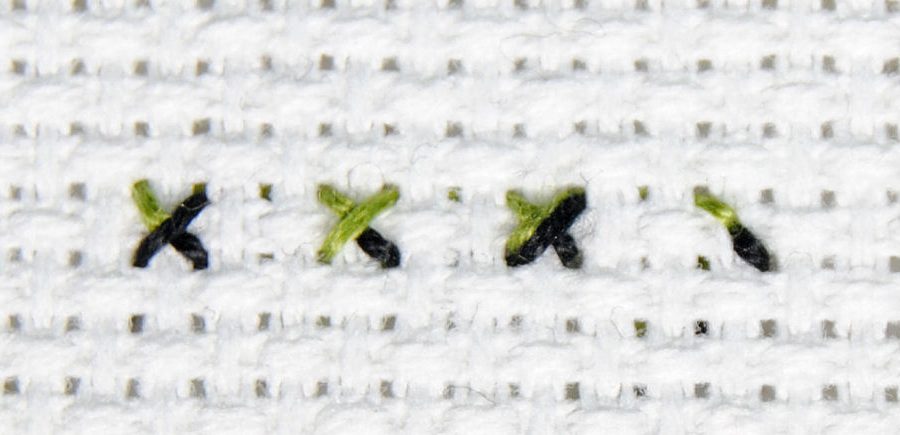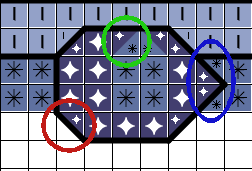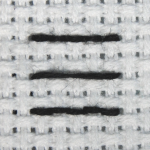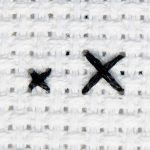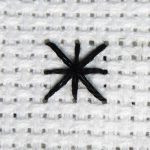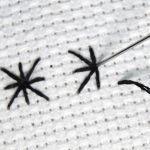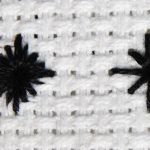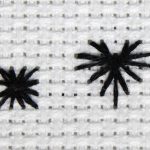This article is part of a series on Advanced and Specialty Stitches. Check the main article for a full list of stitches. This one is just about the quarter stitch.
Table of Contents
Quarter Stitches
The quarter stitch is one that comes up a lot in questions — mainly because it’s fairly subjective how they should be stitched.
First, here’s how they might look in a pattern. This is a snippet of my Skyrim Nirnroot design. You’ll see them as a small symbol that take up half the square. Sometimes these are on the edge of a design, sometimes right in the middle. They may have backstitch over them, or they may not. The problem lies in the fact that there are several ways to interpret these symbols.
Stitching over 1 vs over 2
If you’re stitching on aida or otherwise stitching over 1, you may need to figure out how to stitch these. You can either pierce the middle of a square with a sharp needle, or if you absolutely can’t manage a quarter stitch on your fabric, you can generally just do a full stitch of whatever color and let backstitch sort out the difference later.
But it’ll be much easier if you stitch over 2, as you have extra holes to work with including one right in the middle of your stitch.
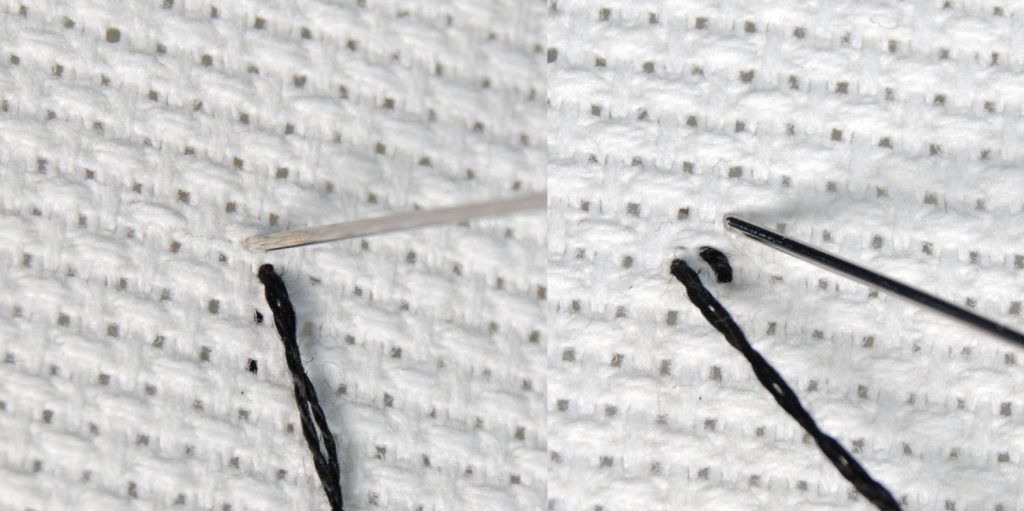
When stitching over 1 you’ll need to pierce the center of your square somehow. This is actually easier done on aida than on higher counts. But typically if you’re working on high counts, you’re stitching over two.
If you enjoy stitching over 1 on high counts though, keep in mind quarter stitches may not work out for you. You can typically replace these with full stitches without much issue. Or leave them out entirely when it comes to quarter stitches. Experiment with what you think looks best if you find yourself in this situation.
Four ways to stitch a quarter stitch
1/4 Stitch
Literally just a a quarter of a stitch. Half a single leg. The direction depends on the direction of the triangle shown in your pattern.
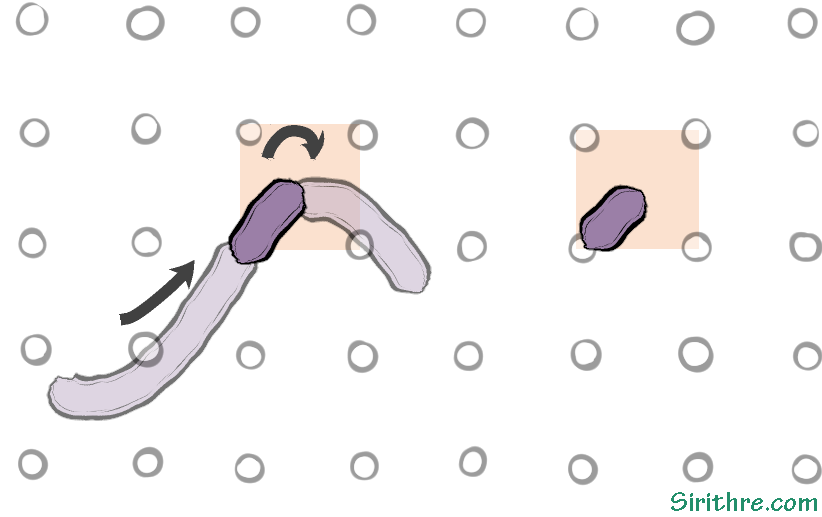
If you’re stitching over one, be sure to use a sharp needle to make it easier to pierce your fabric where there is no hole.
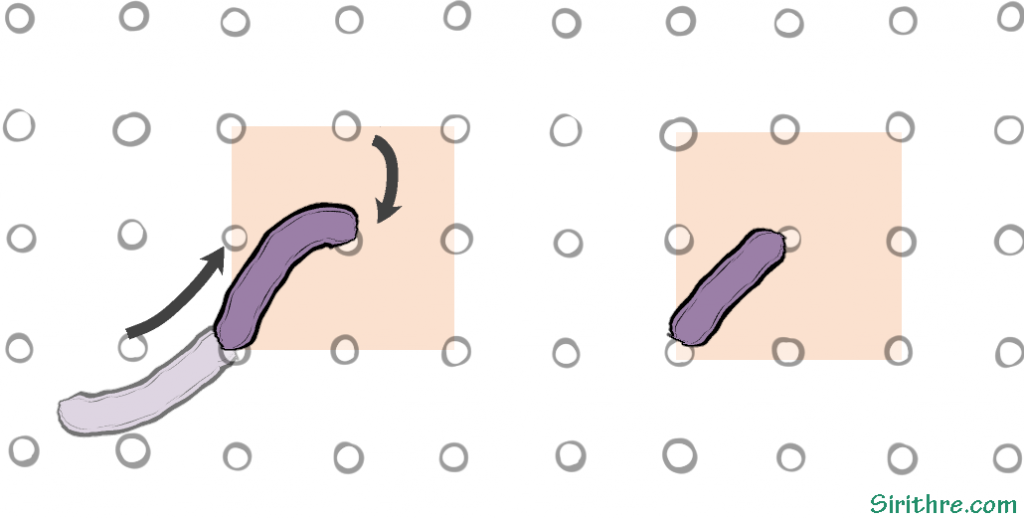
When stitching over 2 you have a convenient middle hole to work with.
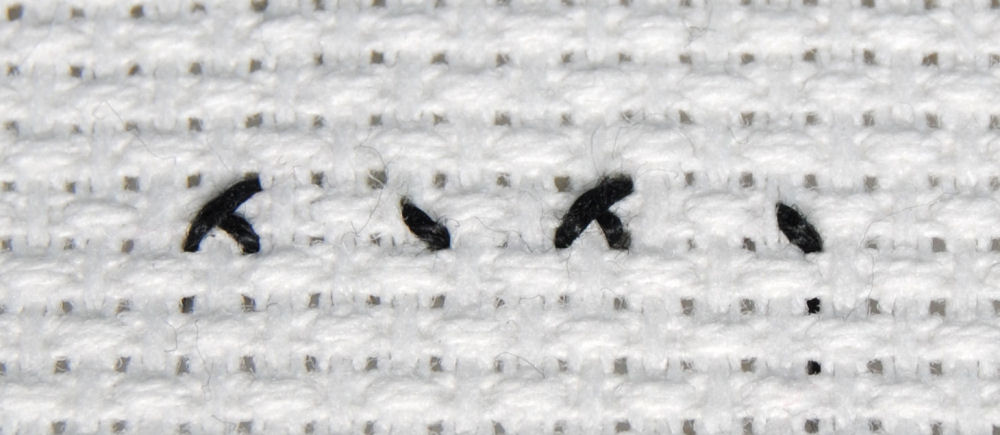
3/4 Stitch

The same quarter stitch, but with another full leg across it. Again, the direction depends on the positioning on your pattern.
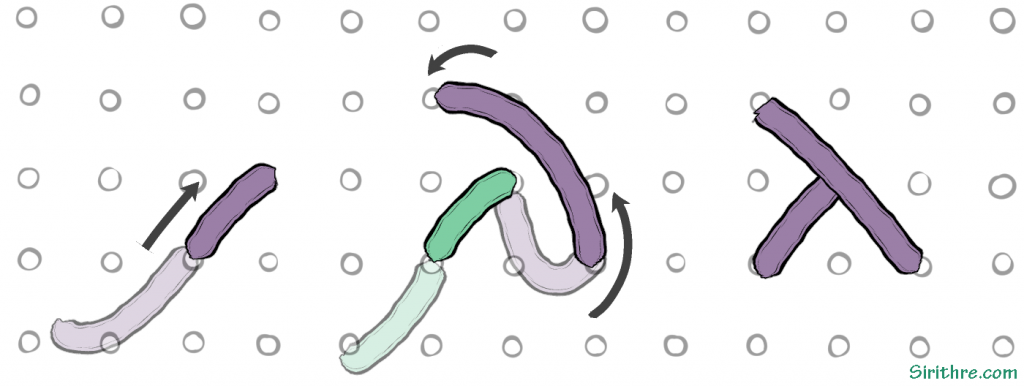
Double 3/4 Stitch
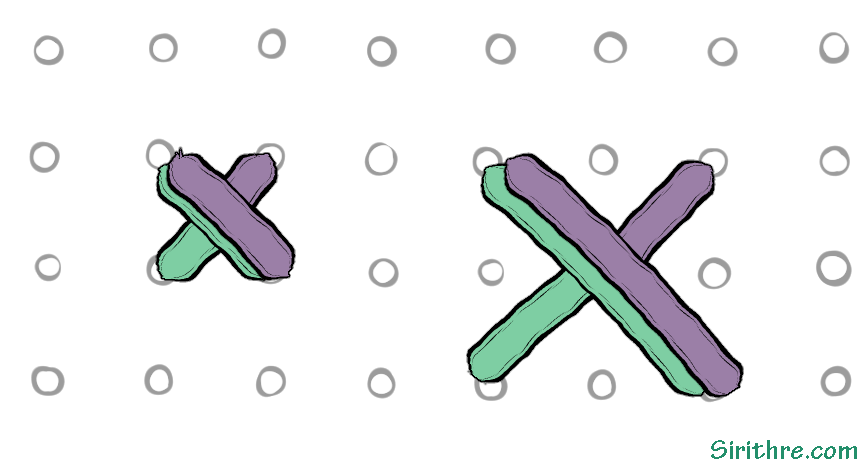
Two 3/4 stitches in the same square, so that the center has a double leg.
Double 1/4 Stitch

Two 1/4 stitches, so there is nothing on the opposite diagonal. Often this will have backstitch over it in the end.
3/4 and 1/4 Stitch Combo
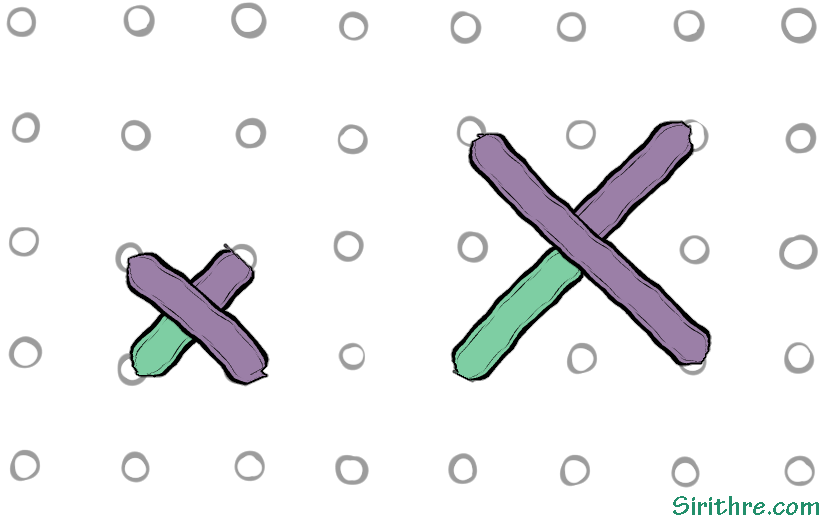
A three-quarter stitch combined with a quarter stitch so that just a single leg is a different color than the rest.
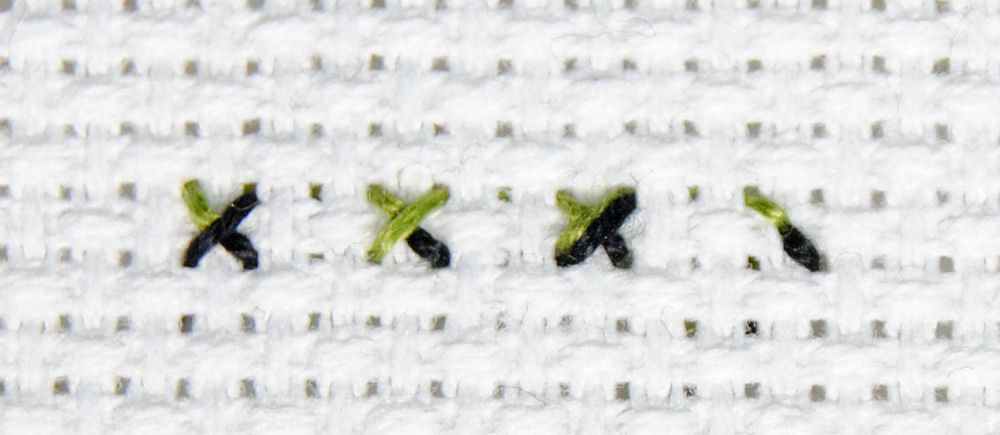
How to decide which combination of quarter stitch to use.
As you can see above, the same “top left green, bottom right black” square can be done… 4 different ways. So which is it? Unfortunately you’ll have to decide yourself based on the context. So let’s look at an example. Here’s a closeup of a small rock in the foreground of my Hollow Knight pattern.
For the red circle, it’s right on an edge. I could do a 3/4 stitch with the bottom left leg missing. Since there’s backstitch going around it, I could also do just a 1/4 stitch in the upper right and let the backstitch take care of the rest, which is what I ended up doing:
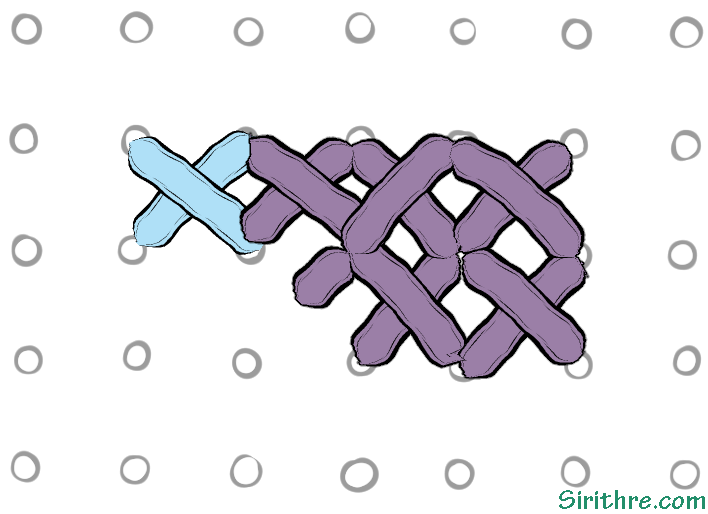
For the blue circle, I would probably do the darker blue as the 3/4 and the lighter blue as just the remaining 1/4 leg, as the lighter blue is considered “background”. But again, I could make them both 1/4 stitches and let the backstitch take care of the middle.
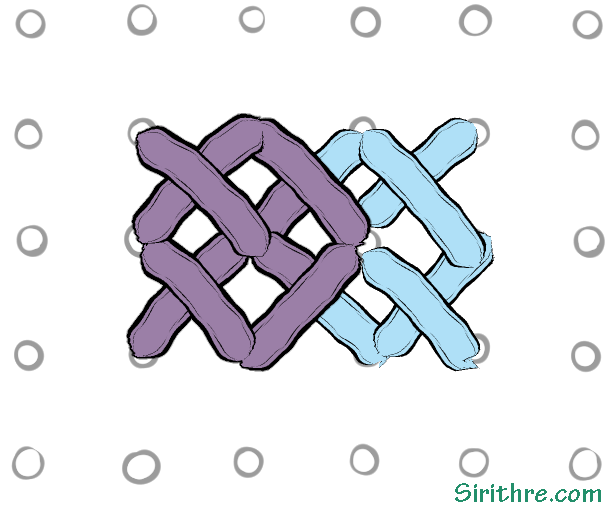
For the green circle, technically neither color is in the foreground. They’re both part of the rock. And there’s no backstitch to obscure any of it. I could easily have done a double 3/4 stitch. Looking back, it seems I arbitrarily decided to make the darker blue 3/4 stitch and the lighter blue 1/4 stitch.
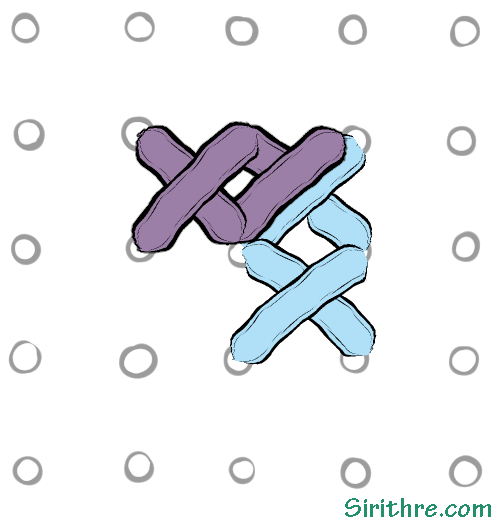
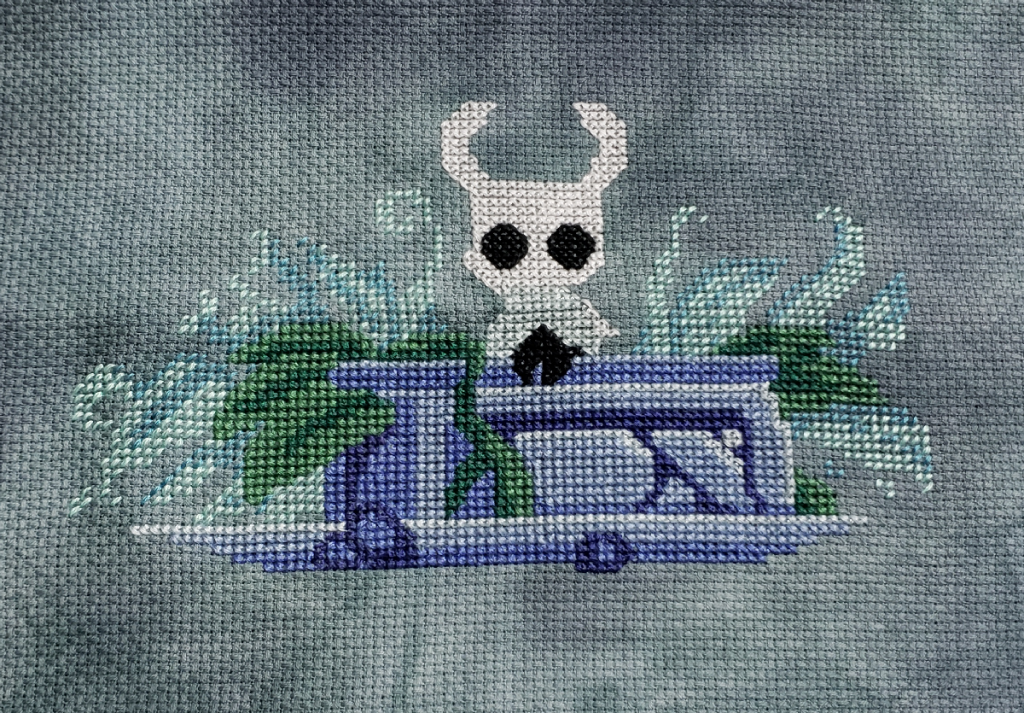
Here’s what the whole thing looked like before I added the backstitch, if you’re curious. There’s a lot of good examples in here. That green vine going across the front? That always took the 3/4 stitch against the ‘background’ blue. Whereas the blue took the foreground in front of the leaves on the right. So it really depends on where you are in the pattern.

